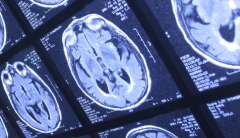Epilepsy Care: The Danger of the Unknown

Spring 2017
Epilepsy is a disease of uncertainty. A seizure is instantly disabling, life altering and—particularly when it first presents—unpredictable. Fear of the unknown is the devastating fact of epilepsy. After a brain injury, what is the risk of developing epilepsy? After one seizure, how great is the risk for another seizure? When anti-seizure medication is indicated, how can a physician know which drug will work without risking another seizure? In a patient with a history of seizures, what is the risk that the disease will require greater scrutiny, additional testing, and multiple drugs or surgery?
Currently, there is no way to definitively diagnose epilepsy or predict the likelihood of future seizures. UCLA neurologists are developing biomarkers for epilepsy patients that will predict the need for greater intervention, or will indicate that patients are not at high risk for further seizures. One biomarker comes from electrical signals in the brain. Drs. Anatol Bragin and Jerome Engel, Jr., discovered several years ago that brain circuits in epilepsy can form especially fast communications among cells. They are investigating the possibility that detection of high-frequency electrical oscillations may serve to indicate which patients will develop epilepsy after an insult, such as traumatic brain injury, and which patients require more advanced therapies.
Classifying seizures this way contributes to better outcomes following surgical treatment for epilepsy when drugs have failed to control the disease. Along with new brain imaging modalities, the UCLA Epilepsy group is developing brain wave recordings of these electrical oscillations as a biomarker in epilepsy so that anxiety and fear of the unknown can be reduced in epilepsy patients.